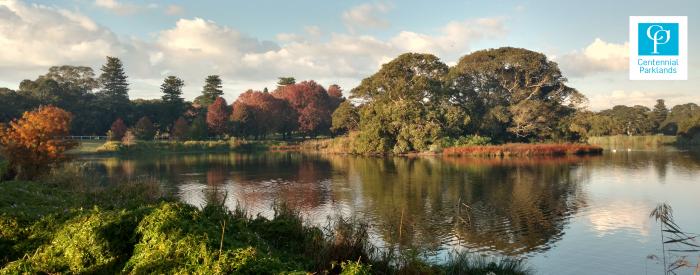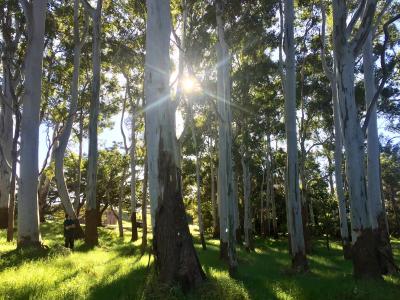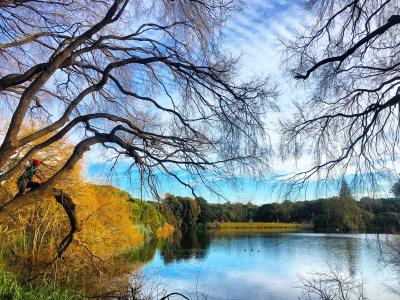You are here
Centennial Park and Moore Park Trust

Centennial Park and Moore Park Trust
Centennial Parklands consists of 15,000 trees on 360 hectares of park in Sydney’s Eastern Suburbs. The Parklands are made up of Moore Park, Queens Park and Centennial Park. Moore Park was designated a recreation ground for the public in 1866. There are many significant trees in Moore Park including historic avenue of Ficus macrophylla planted in the 1860s along the length of Anzac Parade. Queens Park was established in 1888 to commemorate the centenary of European settlement in Australia. There are three massive Ficus macrophylla said to predate the park itself. Queens Park is also home to some of the oldest and largest trees in Centennial Parklands. The Park was planted in the 1890s and 1930s with Ficus macrophylla and Ficus rubiginosa, Pinus pinaster, Araucaria heterophylla and Quercus ilex .
Centennial Park was originally a swamp which was set aside as the water source for Sydney. The park was reconstructed as a public park and opened in 1888 by Sir Henry Parkes. The vision was to create a "People's Park" in which the citizens of Sydney could "take in the air" away from the Sydney town center. Among the significant trees in Centennial Park are the planting around Grand Drive a 3.8km loop of the park. Planted in 1896 Grand Drive was planted in a special sequence of two Ficus rubiginosa, a Quercus ilex, followed by Ficus rubiginosa, Araucaria heterophylla and Quercus ilex. This design cleverly overcame the problem of arranging an avenue of trees around a circular road and means visitors can stand anywhere on Grand Drive and see three tree species. The park has many prominent plantings of Melaleuca quinquenervia. The most significant of these is a unique double row avenue planting near the Paddington Gates. Established by Joseph Maiden, Paperbark Grove is one of the most photographed areas in the park.



